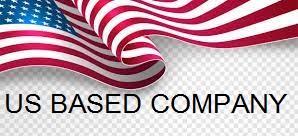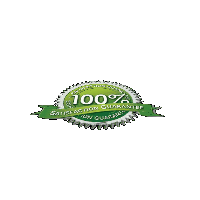| HABBERS LIMITED: | |||||
| Proportion of debt that has variable interest | |||||
| 3225/5650 | 57% | 1600/4025 | 40% | ||
| Overdraft interest at 5% | 3225*.05 | 161 | 1600*.05 | 80 | |
| Bond interest rate | 2425*.08 | 194 | 2425*.08 | 194 | |
| 355 | 274 | ||||
| Proportion of interest payments variable | |||||
| 45% | 29% | ||||
| Interest cover | |||||
| PBIT/interest | 2992/355 | 8.4 | 2939/274 | 10.7 | |
| Long term debt-equity ratio | 2425/12432 | 20% | 2425/11325 | 21% | |
| total debt/equity | 5650/(12432) | 45% | 4025/11325 | 36% | |
QUESTION 3
(a)
| 2015 | 2014 | |||||
| days | Days | |||||
| RECEIVABLES | 5000/35000*365 | 52.14 | 53 | 2760/26400*365 | 38.16 | 39 |
| INVENTORY | 2400/25000*365 | 35.04 | 36 | 1620/19000*365 | 31.12 | 32 |
| PAYABLES | 4020/25000*365 | 58.69 | 59 | 4560/19000*365 | 87.6 | 88 |
| `WC cycle | 30 | -17 |
- Harrington’s short-term liquidity position seems to have improved with a rise in both the current and quick ratios.
- Whilst liquidity has improved it will need to be monitored closely as the company has gone from having a positive cash balance of $60k to a bank overdraft of $1,380k. The improvement is therefore down to the increase in receivables which have increased in relation to revenue (2015: 14.3% of revenue; 2014: 10.5% of revenue).
- Trade receivable days have increased from 39 to 53 days, meaning that it is taking longer to collect income due. Harrington should therefore monitor its trade receivables days and ensure that these are collected or there may be a risk of over-trading.
- Trade payable days have fallen from 88 to 59 days, trade payables having fallen in relation to cost of sales, indicating that Harrington is taking less time to pay its suppliers. This may allow them to maintain good relations with suppliers, and/or take advantage of early payment discounts but is being financed by the bank overdraft as it is taking longer to collect receivables.
- The company has issued an additional $7,000k in loan notes which it would appear to have used to finance the purchase of non-current assets. This has increased gearing from 19.35% to 37.86%. This is still at an acceptable level.
- The ability of the company to cover the increased level of interest due on the loan notes should be monitored
- A cash flow statement would be useful to see the quality of the earnings generated and the availability of cash from operations to meet the interest payments.
| Workings | 2015 | Workings | 2014 | |
| Current ratio | 7,400/5,400 | 1.37:1 | 4,440/4,560 | 0.97:1 |
| Quick ratio | (7,400 – 2,400)/5,400 | 0.92:1 | (4,440 – 1,620)/4,560 | 0.62:1 |
| Gearing | 10,600/(17,400 + 10,600) x 100 | 37.86% | 3,600/(15,000 + 3,600) x 100 | 19.35% |
QUESTION 4
| liquidity or working capital | |||||||
| receivable days | |||||||
| receivables balance *365 | 105.00 | 38.13 | 39 | 80.00 | 29.49 | 30 | |
| turnover | 1005.00 | Days | 990.00 | Days | |||
| payable days | |||||||
| payables *365 | 20.00 | 73.00 | 73 | 10.00 | 38.42 | 39 | |
| cos | 100.00 | Days | 95.00 | Days | |||
| inventory days | |||||||
| inventory *365 | 35.00 | 127.75 | 128 | 30.00 | 115.26 | 116 | |
| cos | 100.00 | Days | 95.00 | Days | |||
| WC cycle | 94 | 107 | |||||
| Receivables plus inventory less payable days | Days | Days | |||||
| current ratio | |||||||
| current assets | 210.00 | 1.27:1 | 190.00 | 1.46:1 | |||
| current liabilities | 165.00 | 130.00 | |||||
| quick ratio | |||||||
| current assets less inventory | 175.00 | 1.06:1 | 160.00 | 1.23:1 | |||
| current liabilities | 165.00 | 130.00 | |||||
| comment on ratios and statement of cash flows | |||||||
| liquidity has declined slightly but is quite healthy – but knowledge of industry norms would be useful | |||||||
| working capital cycle has improved – but mainly due to taking longer to pay creditors | |||||||
| receivables are taking slightly longer to pay, and higher inventory levels are being kept. This may be intentional, otherwise need to ensure credit procedures effective and inventory holding costs not increasing unnecessarily | |||||||
| cashflow shows that $475 generated from activities, which needs to be compared with the profits generated | |||||||
| Cashflow analysis shows that an additional net $110 was invested in non-current assets. This may have a beneficial effect on profits in the future | |||||||
| Cash used to repay long term liabilities – reduce interest costs | |||||||
| Small reduction in cash holding from last year to this. | |||||||
| Profit generation fairly consistent year on year | |||||||
You Need a Professional Writer To Work On Your Paper?

Have any Assignment?








